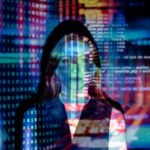Every child must be shielded from violence, exploitation, and abuse on the web – UNICEF
Child Online Protection (COP) may be a global challenge that needs urgent attention. Children today have varied access to the web through laptops, desktops, mobile phones, and tablets, with all sorts of data available to them.
According to a UNICEF report (Children’s Online Practices in Ghana, 2017), about 8 in 10 children visit Facebook, 5 in 10 visits WhatsApp and a pair of in 10 visit YouTube. For the highest three visited social networking sites/platforms, more boys and concrete residents visit the sites most. 3 in 10 children have experienced something that bothered them online. 4 in 1O children will accept all requests made to them online. 2 in 10 children have met someone face to face who they first need to know online. just one in 1O children sends a photograph or video of themselves to someone they need not met face to face, and a couple of in 10 children are treated in an exceedingly harmful way or in an exceedingly way they failed to like while online. The report also states that about 2 in 10 parents/guardians never check what their children do on the web.
The phenomenal growth of internet usage provides opportunities for these children to access and share useful materials for learning. However, the dearth of digital literacy and online safety measures will expose these children to the risks of cyberbullying, sexual extortion, and other crimes as mentioned within the part one (1) of this text. These and other findings make to the requirement for stiffer controls and measures in child online protection.
In this second part, we shall specialise in other online sexual offenses as per sections 67 (Non-consensual sharing of intimate image), and 68 (Threat to distribute prohibited intimate image or visual recording). To sum it up, i will be able to discuss matters of legislation and repair providers in section 87 (Blocking, filtering, and taking down of illegal content) of the Cybersecurity Act, 2020.
Section 67: Non-consensual sharing of intimate image
A non-consensual intimate image could be a sexually explicit material (images, videos, animation, etc, as clarified within the previous article) captured, published, and shared without the consent of 1 or more persons within the material. it’s illegal to electronically share sexual images of someone, taken without their knowledge or consent. this is often likened to sending nude photos and other explicit images through email, text, and/or social media platforms to exposing oneself publically to strangers, which is brought up as offence. Also, an intimate image could be a picture or recording within which an individual is nude, partially nude, or engaged in explicit sexuality that’s made in circumstances that make to an expectation of privacy within the picture or recording.
Section 67 states that “a person shall not, with intent to cause serious emotional distress, intentionally distribute or intentionally cause another person to distribute the intimate image or prohibited visual recording of another identifiable person without the consent of the person depicted within the intimate image and in respect of which, there was an inexpensive expectation of privacy both at the time of the creation of the image or visual recording and at the time the offence was committed.”
In this case, “serious emotional distress” includes any intentional conduct that leads to mental reactions like fright, nervousness, grief, anxiety, worry, mortification, shock, humiliation, and indignity, moreover as physical pain.
It is important to grasp that, in most cases, these intimate images or videos are stolen from the victims’ phones or laptops. they’re also captured from the bathrooms, swimming pools, and changing rooms. Those non-consensual intimate images are later accustomed stalk and extort money from victims, their families, or perhaps friends.
Simply, don’t leave your phone or devices unlocked. the sole immediate option available currently to stop incidents of non-consensual intimate images is to practice good digital security, as there are other threats like spyware wont to spy on people, that permits greater perpetration of such incidents. Spyware may be installed without the device owner’s consent to secretly monitor, or stream the victim’s personal information—images, videos, and geolocation data.
Section 68: Threat to distribute prohibited intimate image or visual recording
As defined earlier, an intimate image here comes with an expectation of privacy. “A person shall not threaten another person to distribute a prohibited intimate image or visual recording of that person in an exceedingly way that might cause that other person distress reasonably arising altogether the circumstances and therefore the threat is created during a way that will cause that other person fear, reasonably arising all told the circumstances, of the threat being meted out.”
In a street sense, this can be like intimate image abuse or cyberbullying committed by anyone, sometimes an aggrieved former partner, but NOT always. The content is shared in an act of revenge to embarrass, humiliate, or cause distress to someone. you are doing not need to be in an exceedingly relationship with the perpetrator for it to be considered intimate image abuse.
Although it’s a criminal offense to distribute prohibited intimate images or visual recording, many ladies face different means of extortion like blackmailing. Once their images or videos are being leaked, victims are sometimes asked to pay amounts of cash for his or her intimate images ‘not to be publicly’ distributed online—online violence.
From the above issues and provisions, how can the service provider and authorities take responsive roles in helping to tackle such a situation that plunges many, especially females, into pain, confusion, anger, depression, and worst, silence for the victim? This brings us to the last section of provisions of COP.
Section 87: Blocking, filtering and taking down of illegal content
“The Authority may, on the order of a court, authorize a service provider to dam, filter, or takedown illegal content and phone numbers used for a malicious purpose which seeks to undermine the cybersecurity of the country. The grounds for blocking, filtering, and taking down illegal content and phone numbers include the protection of national security; the protection of children; the general public safety; the prevention or investigation of a disorder or a crime; the protection of health; the protection of reputation or the rights of an individual; the prevention of the disclosure of data received in confidence; compliance with a legal order; or the other ground that the Authority may determine.”
A comprehensive framework of law is an important tool for promoting a supportive and safer online environment for kids and youngsters. Such a regulatory model or set of rules may extend the grounds on which blocking or removal may legitimately be taken even without the requirement for a judicial writ. Authorities (administrative or police) or public prosecutors will be given specific powers to order internet access providers to dam access without advance judicial authority. this needs action on the a part of the web service provider within a specified period, and with none notice being given to the content provider or host themselves. In some countries, where a judicial writ is otherwise needed, hosting providers who have knowledge of such material is also expected to get rid of it voluntarily without judicial authority and to supply the content provider with due notice.
Conclusion
From these provisions of the Act, it’s understandable why we must practice online safety, and also the must promote social responsibility for posting and sharing information because nobody deserves any reasonably humiliation and indignity, fright, nervousness, grief, anxiety, worry, shock, also as physical pain. All stakeholders, Government Ministries/Departments, enforcement agencies, civil society organizations, private corporations, etc. should join hands to contribute to child online protection. Parents/guardians have a big role to play in supporting, mediating or monitoring without limiting the rights of kids as they use the net.
To stay safe online, never give out your passwords—keep them to yourself; not everyone online is who they are saying they are; don’t join up with people you’ve got met online; consider carefully about what you say before you post anything online—they are your digital footprints, it stays there forever; think before you share any material online; if you are feeling threatened, report back to the National Cyber Security Centre (NCSC) or any authority, call or text 292 for help.
Author: Richard Kafui Amanfu – (Director of Operations, Institute of ICT Professionals, Ghana)










